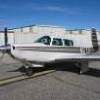Low power settings on Rocket?
-
Members Online
- Seth Miller
- dvk
- McMooney
- LANCECASPER
- Planegary
- Scottknoll
- GeeBee
- MikeOH
- Stubby
- natdm
- FlyingDude
- Parker_Woodruff
- Sue Bon
- MattD89
- mooneyflyfast
- Ragsf15e
- tbone40x
- salty
- M20S Driver
- PeteMc
- Shadrach
- mariosmt
- Florian Guthardt
- Texas Mooney
- rahill
- exM20K
- RescueMunchkin
- KB4
- Missile 300
- tankles
- Aviationist
- BennyandtheJet
- CCAS
- jlunseth
- MatthiasArnold
- denbmd
- dzeleski
- tim417
- TigerFan
- TCC


Recommended Posts
Join the conversation
You can post now and register later. If you have an account, sign in now to post with your account.